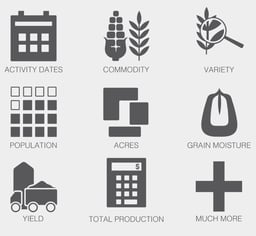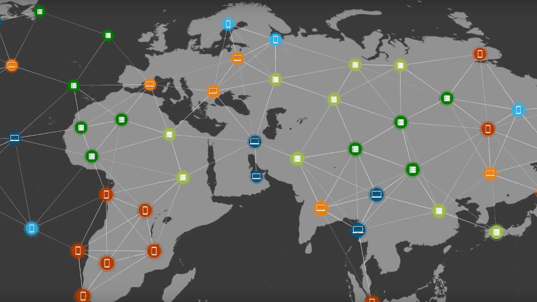Value Vector
What Lies Beyond Data Monetization (Part 2)
Sandra Mueller

In the first part of this post on Data Monetization, we took a look at data platforms and marketplaces being established and raised some of the possible challenges of implementation. In our second part, we'll explore some of the use cases already active and consider how blockchain and AI technologies could take the opportunities even further.
Businesses are starting to realize that not only can collecting data provide useful analytic insights into their business practices, but it can also provide a new stream of revenue through selling data to other businesses, researchers, government, and competitors.
Some examples across different industries are:
Car data monetization
Israeli startup, Otonomo, has built the first connected car database with which it collects, packages and sells data to insurers, retailers and city planners and others willing to pay for it. Otonomo’s marketplace packages car-generated data parameters into data bundles. Service providers can subscribe to these data bundles and receive aggregated anonymized data and data from specific car owners (pending the OEM and car owners approval). In addition, they can get reports, analytics and notifications tailored for their specific needs. In return, it takes a percentage of sales. More than 2 million cars are already on Otonomo’s platform. With the sheer number of data points are in the vehicles of today - and in the future- it's clear big data means big profits.
Agricultural data

Farm Mobile creates a means to buy and sell farm data. Farmers play a yearly subscription which includes a Passive Uplink Connection (PUC) – a small, in-cab device that collects machine and agronomic data every second. As the farmers work in the fields, Farmobile automatically builds an Electronic Field Record (EFR) of data including planting dates, commodity, variety, population, harvest dates, total production, average yield, average moisture and more. Twice yearly, at the end of planting and harvest season, data is certified and placed in a data store for purchase by equipment manufacturers, agronomists, insurers and other interested parties. Data can be sold multiple times to different buyers each season. Its value compounds year-over-year providing ongoing monetization opportunities.
Smart city data
We can expect to see a substantial growth in smart cities using a combination of open and paid data, creating a platform for innovation, efficiencies and new business models. One example is smart city providers Streetline, who collect and collate numerous types of data from in-ground sensors from traffic cameras to Wi-Fi connections, piecing together this information to create a map of parking spaces and signaling whether spots are occupied or vacant. They use this information to earn revenue from both the municipal governments and drivers using the service. For individuals, Streetline can harvest the data from people using the app to find parking, thus improving the overall accuracy of the system’s parking maps. For municipalities, there is a monthly service fee along with an up-front installation cost of about $200 per parking space to install a wireless sensor that tells the city government whether a vehicle is parked there. Municipalities can recoup these costs through more efficient management of city parking.
Where to from here? Coding and AI as a Service meets Blockchain technologies

One of the most interesting developments right now is the intersection between blockchain technologies and AI and data. For example, Crowdmachine are creating a GitHub-like source repository enabling the commercialization of source code by the developer community. It allows developers to monetize their intellectual property in an open marketplace. Combined with this is a powerful peer-to-peer computational network that leverages global device capacity (including IoT devices) to power the execution of blockchain and decentralized Apps where owners are paid for allowing their devices to be a part of the App execution network. When you consider scenarios where connected machines are not in use after hours, some interesting scenarios emerge.
Perhaps even more interesting is SingularityNET. Their founder is the Ben Goetzel, is also Chief Scientist of Hanson Robotics (make of Sophie the robot.) Partnering with Ocean Protocol, they are creating a decentralized global market for AI services in which parties own their own data. It also dramatically lowers the barriers to using AI: by wrapping AI algorithms for the SingularityNET, they aim to create a simple and open standard for interacting with these algorithms. Then open source developers will be able to monetize their algorithms, while the whole world will be able to use them at scale. Underpinning their efforts is the desire to radically reset the current path of AI technologies, shifting from an environment with an increasing concentration of resources and capabilities, to a world with open access to immensely powerful technologies.

With the rapid development of AI capabilities, it's foreseeable that we could experience a future of Intelligence-as-a-Service, where machines learn from each other, work together create greater data sets for monetization, and trade among themselves with only minimal human intervention.
We are only really touching the surface of how technology could transform the industries of today and the future, there's infinite scope for discussion, debate and deliberation. To find out more about how technologies such as blockchain and AI are disrupting connected industries, we invite you to attend our upcoming webinar.



